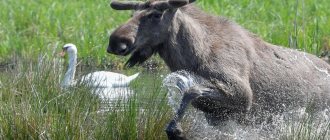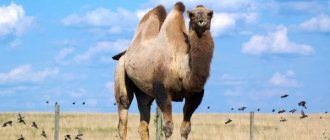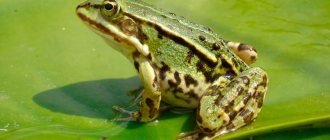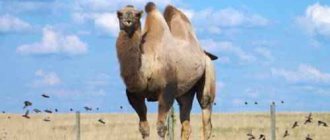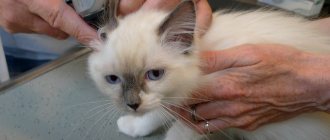The benefits and harms of hedgehogs
Most hedgehogs live in the forest and their activities simultaneously bring both benefit and harm. This animal feeds on insects, which prevents the spread of cockchafers, caterpillars and silkworms, whose activity negatively affects other inhabitants. But the hedgehog also doesn’t mind eating the eggs of birds that build nests on the ground. Thus, lapwing, snipe and dunlin almost completely disappeared from the Hebrides.
Even in ancient times, hedgehogs brought benefits to people. The Romans made clothes from their skins and used their meat for food. It was also believed that the bile, ashes and organs of a hedgehog, when properly prepared, would protect against baldness.
A hedgehog can be a pet. Even now it is found in some homes. If you take proper care of him, he will turn into a pretty cute pet. However, it is better not to pick up wild hedgehogs. They can be carriers of various infections, so it is better to avoid contact. Also, their needles collect a large number of ticks from the grass, which burrow into them and remain with the animal for the rest of its life. Therefore, if someone brings a wild hedgehog into the house, they should immediately take it to the veterinarian for appropriate tests.
Interesting: How do hedgehogs remove apples, mushrooms and berries impaled on their spines? Description, photo and video
Elizaveta Maltseva, 1st grade student of the private educational institution Gymnasium No. 212 “Ekaterinburg-Paris”, Ekaterinburg, yearsNomination: “Research Project” Curator: Trush Irina Vladimirovna, teacher of the non-profit educational institution
Why does a hedgehog need needles?
Introduction
Who doesn’t know the hedgehog, a cute animal carrying apples and mushrooms on its thorns. Even if we have never seen it in nature, it is familiar to us from cartoons and fairy tales. Hedgehogs live in the forest, as well as in city parks and groves. They can also be found in the vegetable garden or garden. And in some regions this animal can be seen right in the yard or even the entrance. And I decided to find out: “Why do hedgehogs eat thorns?”
Target
: find out
why
a hedgehog needs needles?
Research hypothesis
: Let's say that a hedgehog needs quills to protect itself from enemies.
Tasks:
- find out from various sources of information what kind of animal a hedgehog is;
- what types of hedgehogs are there;
- how a hedgehog defends itself from enemies;
Study plan:
- Find and study information about the hedgehog in the literature and the Internet.
- Watch hedgehogs in the petting zoo;
- Conduct a survey of your classmates and find out what they know about hedgehogs and why they think a hedgehog needs needles.
- Draw conclusions
- Present the project to your classmates.
2. Theoretical research
The common hedgehog is a small animal. The length of its body is 20-30 cm, the tail is about 3 cm, the body weight is 700-800 g. The ears are relatively small (usually less than 3.5 cm). The muzzle is elongated. The animal's nose is sharp and constantly wet. The paws have 5 toes with sharp claws. The hind limbs are longer than the forelimbs. The spines of the common hedgehog are short, no more than 3 cm.
In the forest, in the grove, in the park, in the garden you can meet an ordinary hedgehog. He may well live next to a person. The hedgehog runs around openly, rustles leaves, sniffles loudly, and when he eats, he smacks his lips.
Nests are built in bushes, holes, caves, abandoned rodent burrows or in tree roots. Typically the nest is 15-20 cm in diameter and contains bedding made of dry grass or leaves.
2.1. Types of hedgehogs
It is generally accepted that the very first hedgehogs appeared on Earth about 30 million years ago. About 5 million years ago, hedgehogs settled throughout the planet, except Australia, South America, Madagascar and Antarctica.
Nowadays, hedgehogs are widespread across all continents except Australia. Hedgehogs live in almost all corners of the globe. There are 19 species of all kinds of hedgehogs on the planet.
Non-spiny hedgehog.
There are 4 species of hedgehogs living in South Asia, which, like their distant ancestors, do not have thorns.
Some are only woolly, others are bristly, others have stubble on their backs, simple hair, and even needles. These hedgehogs have rat tails. The largest of the woolly hedgehogs is the great gymnur. All other hedgehogs have spines.
Spiny hedgehogs.
Six species of hedgehogs live in Russia. Their main, well-known feature is short, stiff needles covering the sides and back. The size of hedgehogs is small: in different species of hedgehogs, the body length can range from 15 to 30 cm. Depending on their lifestyle, they can be divided into two groups: forest hedgehogs and steppe hedgehogs.
Representatives of the first - forest hedgehogs - common, Amur and white-breasted hedgehogs - live in forests. True, the white-breasted one can also be found outside the forest zone: in forest-steppes, steppes and even deserts. Hedgehogs of this group build their nests from dry grass and fallen leaves under tree roots, fallen trunks or in depressions in the soil. In forest hedgehogs, the spiny carapace goes down to the sides, and on the forehead is divided by a “parting” - a strip of bare skin. The needles are smooth and shiny. The ears are short. When frightened, they curl up into a spiny ball.
Divided into 3 types:
1. Common hedgehog - head, sides and belly are gray, needles with dark transverse stripes. It lives in central European Russia, the Middle Urals and the south of Western Siberia. Avoids dense forests and swamps, preferring sparse, dry areas. Spends the day in a nest of branches and leaves, which it builds under the roots, or in other shelters. In spring, it is often caught during the day, when it is actively eating after hibernation.
2. White-breasted hedgehog - similar to an ordinary hedgehog, but the head and sides are dark brown, much darker than the throat and belly. There is almost always a white spot on the chest. The needles are light with a dark band at the top. It lives in the middle zone and in the south of the European part of Russia, in the Caucasus and the Southern Urals along the edges of deciduous forests, steppe ravines, canal beams and forest belts. It builds a nest only during wintering.
3. Amur hedgehog - similar to an ordinary hedgehog, but part of the needles (about a third) are white without dark transverse stripes. Unlike the European hedgehog, the Amur hedgehog has a lighter color. Lives in the forests of Southern Primorye. Usually spends the day in the nest, but on cool rainy days it often hunts around the clock.
Representatives of the second group are steppe hedgehogs
- Daurian, long-eared and long-spined hedgehogs are inhabitants of open steppe and semi-desert spaces. They live under natural shelters or in burrows they have dug themselves, but never bother making any kind of bedding. In case of danger, these hedgehogs do not like to curl up into a ball, but prefer to flee or try to prick the offender with needles.
Steppe hedgehogs do not have a parting on the crown of their head, and their spiny shell almost does not extend over the sides. Needles with longitudinal grooves. In Russia there are 3 types of steppe hedgehogs:
1. Daurian hedgehog - short ears (less than half the length of the head). The head is usually light. The fur on the belly is long and harsh. The Daurian hedgehog is less prickly than a regular hedgehog: its spines are directed backwards. It lives in the South-Eastern Transbaikalia, in the steppes and steppe forests.
2. Long-eared hedgehog - the ears are very long (longer than half the head; the ear curved forward goes behind the eye). The fur on the belly is short and soft. It lives from the Don to the Ob, in Tuva in dry steppes and semi-deserts, adhering to the vicinity of reservoirs, irrigated lands, wet depressions, loose sands and overgrown pastures. Often found in populated areas and in forest belts. Digs inclined holes over a meter long, ending in a nesting chamber. Very mobile, because in open spaces you need to be able to run quickly.
3. The long-spined hedgehog is one of the largest members of the hedgehog family: its weight ranges from 500 to 900 grams. The needles of this hedgehog are much larger than the others: their length is about 4 cm, and they grow on the back and sides. The belly, the upper part of the muzzle - the forehead, are covered with soft hairs. On the head of this species of hedgehogs there is a so-called “parting” and an area not covered with either needles or hair. You can meet the long-spined hedgehog in the deserts and oases of Afghanistan, Iran, Pakistan, Uzbekistan; it is included in the list of protected animals in Turkmenistan, Uzbekistan, and Kazakhstan. It is very rare in Russia.
Of the six species of spiny hedgehogs in Russia, two of them - the Daurian and the long-eared - are listed in the Red Book. Unlike other hedgehogs, whose numbers are increasing, these two species are gradually disappearing.
2.2. Hedgehog spines
The hedgehog is a mysterious animal. It is difficult to meet him in the forest, and even more difficult to pet him - seeing a person as a threat, the hedgehog instantly curls up into a ball, from which sharp needles stick out in all directions. You can even get hurt. Of course, it’s very interesting, why is the hedgehog so prickly?
The hedgehog has almost transparent ears, and the abdomen is unprotected and soft. Hedgehog spines located only on the back; the muzzle and abdomen are covered with regular hair. Without thorns, it would be even more difficult for the hedgehog family to survive.
In fact, hedgehog spines are modified wool. Usually, hedgehogs' needles are smooth and hollow, and they grow to their normal state in 12-18 months. The needles grow over the course of a year and a half, but change less often than hair. In a year, only one out of three needles falls out, and a new one grows in its place. The needles are a prickly shell that protects the animal from danger. An adult hedgehog has up to 16 thousand needles, 2-3 cm long and approximately 1 mm thick. The needles are spindle-shaped: their thickest part is in the middle. Their color is gray, but if you look closely, you will notice that they have alternating dark and light stripes. Hedgehogs are born naked, not prickly. But after a few hours they are covered with white and dark needles. After two weeks, the babies open their eyes. By this time, the needles are already hard, like those of an adult hedgehog.
The structure of the needles is similar to hair that has been highly modified during evolution. They are hollow inside and divided into chambers filled with air. Grows at the same rate as hair. Between the needles there are thin, long and very sparse hairs. Each needle has a muscle attached to it that raises and lowers the needle. And in case of danger, the needles intersect at different angles, forming an impenetrable cover of spines. The hedgehog deftly climbs trees. And here the thorns help him. If a hedgehog falls from a tree, the needles soften the fall and the hedgehog will not break.
However, the needles are not only the protection of the hedgehog, but also the cause of great inconvenience, since among them a large number of parasites find a convenient refuge on the hedgehog’s skin: lice, ticks, hedgehog fleas. The hedgehog cannot comb them himself, and is forced to tolerate uninvited guests. If we return to apples, then the hedgehog, even if he really wants to, will not be able to prick it on the back - the needles are too soft for this, they will simply bend. The most they can hold is fallen leaves. Therefore, a hedgehog with apples and mushrooms on its prickly back, rushing to make provisions for the winter, is a fairy-tale image, not a real one. There is no need for winter supplies at all.
Although the hedgehog eats apples, in this case he does not use the apple for food at all, but so that with its sour juice it scares away parasites hiding between the needles.
2.3. How does he defend himself from enemies?
For some reason, it is believed that the hedgehog's spines are designed to carry apples, mushrooms or leaves. It’s as if the hedgehog is making supplies for the winter and carrying them on its back to the burrow. In fact, the hedgehog's spines are only for protection. When a hedgehog is in danger, its spines rise and it can curl up into an invulnerable ball. He has this ability thanks to a muscle that is located under the skin on his back. This is a great opportunity to protect yourself from predators. And he has many enemies: badger, fox, man, large owls (eagle owl), wild boar, dogs, cats, crows, ferrets. After all, the small size of a hedgehog does not allow it to fight back against larger animals, for example, a fox, a dog or a wolf. But injecting them into a sensitive nose is easy. True, needles have a significant drawback. They are heavy, so the hedgehog cannot move fast enough. That is why, instead of running away, the hedgehog immediately curls up into a ball.
2.4. Is it possible to keep hedgehogs at home?
People often bring hedgehogs from the forest. This cannot be done, because in captivity they may die. Hedgehogs can settle near human habitation, but they do not like being taken into the house.
3. Watching hedgehogs in a petting zoo
I visited the petting zoo to observe hedgehogs and their behavior. This petting zoo featured a dwarf African hedgehog, which sleeps during the day and wakes up and leaves the house around 18.00. The African pygmy hedgehog does not occur in nature - it is an artificially bred species of hedgehog. It appeared recently and immediately gained popularity among admirers of domestic exotics all over the world. This hybrid breed was created specifically for home keeping as a result of crossing the Algerian and other representatives of the genus. Externally, the African pygmy hedgehog is similar to a regular hedgehog, but much smaller in size. The African hedgehog easily fits in the palm of your hand: its body length is no more than 20 cm, and it weighs no more than 500 grams. The upper part of the mini-hedgehog’s body, sides and top of the head are also covered with needles, the length of which is about 2-3 cm. When the hedgehog is in a good mood and relaxed, its needles are not prickly at all, they are soft. On average, one hedgehog has up to 10 thousand needles, which are renewed every three years.
Caring for these types of hedgehogs is not too difficult. A spacious cage (the larger the better), a bowl, a drinking bowl and a house for privacy, with a wheel, feeder and toys is enough. An ordinary diaper, straw or sawdust is usually used as bedding.
And also miniature hedgehogs are heat-loving animals. They will feel comfortable at a temperature of +22- +25°C. Therefore, you need to protect your hedgehog from colds: avoid drafts, do not give cold water to drink.
4.
Survey results
I conducted a survey among students in my class in order to find out why a hedgehog needs needles?
Based on the survey results, I received the following data:
1. Hedgehogs need thorns to protect themselves from enemies - 5 people answered
2. Hedgehogs need spines to carry food - 1 person answered
3. To curl up into a ball - answered by 1 person
4. I don’t know – 3 people answered
5.
Conclusion
I believe that I managed to achieve my goal, as well as confirm my hypothesis. Indeed, a hedgehog needs needles for protection. Quills are the hedgehog's main defense. His teeth are weak. If the hedgehog is in danger, it curls up into a ball. No enemy will dare to bite this thorny ball. It can also be assumed that if a hedgehog can attack a viper and a mouse, then it can also use needles as a means of attacking the victim.
It also turned out that the hedgehog does not specifically collect apples and mushrooms as winter supplies. They don't need supplies. They survive the winter using accumulated fat. Strings apples, mushrooms and leaves on thorns to repel parasites that settle between the needles.
Now I am sure that the hedgehog needs needles for protection. I confirmed my assumptions by reading about this in various sources.
Bibliography
- Internet resources: https://www.ezhik-mir.ru; https://zoolog.guru; https://ru.wikipedia.org
- “My first encyclopedia” / Moscow Rosman 2012.
- Children's encyclopedia “Tell me why” / Arkady Leokum
Application:
Project presentation
Does a hedgehog change its spines?
A hedgehog can attach leaves and flowers to its needles, which it takes to the nest
. Just like its fur, a hedgehog’s spines are also gradually renewed throughout its life. However, their replacement occurs gradually so that the animal is not left with a bare back. Some needles fall out within a year, and new ones immediately begin to grow in their place.
Interesting fact: if a hedgehog's spines fall out in greater numbers than new ones grow, and his back gradually becomes bald, it means he is sick with something.
During the winter, the hedgehog hibernates, and when it emerges in the spring, approximately 30% of the spines on its back have fallen out. Because of this, for some time the cover of thorns does not seem so dense. But it is still enough to protect against predators. Moreover, within a few weeks new needles will appear in place of the fallen needles.
If you find an error, please select a piece of text and press Ctrl+Enter.
Hedgehog to help the summer resident
Ecologist Elena Dubynina shared her observations of the life of hedgehogs. According to her, it is possible and necessary to settle the animal on the site. Hedgehogs mainly feed on insects, including many pests of vegetables and fruits. The hedgehog will happily eat all of them, and will also catch a mouse or a snake that has accidentally crawled into the dacha.
“We have a forest on the next street, so hedgehogs are frequent visitors, and several neighbors’ garden plots have a regular hedgehog. For several nights he wanders around our site, sleeps during the day under the old bathhouse, then, having collected everything he can, he goes to the neighbors’,” Elena Dubynina told NDN.info.
In order for a hedgehog to visit a dacha, it needs suitable conditions. Dubynina focuses on the safety of the site for the animal. And if the hedgehog likes it in the garden, he will bring his entire hedgehog family there.
The hedgehog will not appear if dogs live in the country. Also, a forest dweller will not be able to overcome a chain-link mesh, a pond, or a fence that tightly rests on the ground. Summer residents are advised to make a hole in the fence 10-12 centimeters from the ground so that a hedgehog can enter the area.
Hedgehogs love to settle in secluded corners. A favorite place is the compost heap. Also, thorny creatures prefer dense thickets of low-growing bushes. In open areas, the hedgehog feels unprotected.
Naturalists even make special hedgehog houses so that the animal can stay for the winter. The dwelling is a wooden box 30x30x30 centimeters with an entrance hole 10-12 centimeters high. The inside of the house is lined with straw or leaves, and covered with branches on top.
The hedgehog is able to feed itself. He is a predator, but eats small animals (mice, snakes) extremely rarely. Mainly feeds on insects. If the animal comes to the site, then you can feed it with protein foods: meat, eggs, nuts, cottage cheese, cheese.
Since childhood, cartoons have taught us that hedgehogs love mushrooms and apples, which they carry around on their needles. However, this is a myth; hedgehogs need needles for self-defense. He is not interested in mushrooms and fruits. It is also a common misconception that the prickly animal loves milk. This is wrong. Cow's milk spoils a hedgehog's teeth and disrupts the functioning of the gastrointestinal tract.

